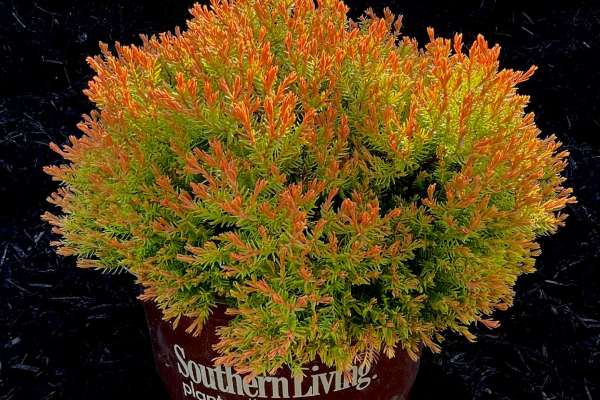The Fire Chief Arborvitae shrub is one of the must-have plants for your garden. It has bright golden foliage that makes any landscape look vibrant. This lively shrub makes a great ornament in spring and remains green throughout winter. Not to forget that the flowers and fruits have no ornamental value to the foliage. But, you will fall in love with the gorgeous foliage.
- Common Name: Fire Chief Arborvitae
- Scientific Name: Thuja occidentalis
- Plant Type: Conifers, Shrubs
- Native Place: Southeastern Canada, Northeastern USA
- Watering: Regular to moderate watering
- Fertilizer: Use chemical fertilizer or organic matter
- Toxicity: Possibly toxic to dogs
- Color: Bright golden to orange, red
- Sun exposure: Full access to sunlight
- Propagation: Cuttings
- Soil Type: Well draining coarse soil
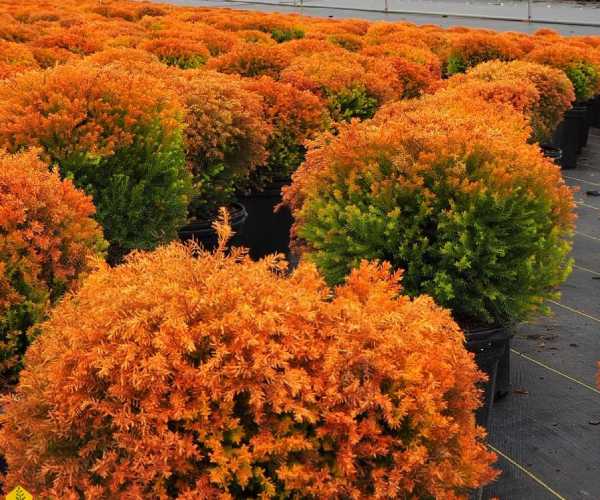
Also, Read How to Grow and Care for Croton Plants? Learn Guide And Tips!
What is Fire Chief Arborvitae?
Fire Chief Arborvitae is a multicolor evergreen that is a North American native. Like any other landscape plant, it shows well and is a relatively low-maintenance shrub. This plant gives a fiery color with soft foliage and is a freezing hardy plant.
If you have one in your garden, you can enjoy its beauty all year round, and it is deer-resistant. This bold evergreen looks excellent in mixed beds, mass planting, and borders.
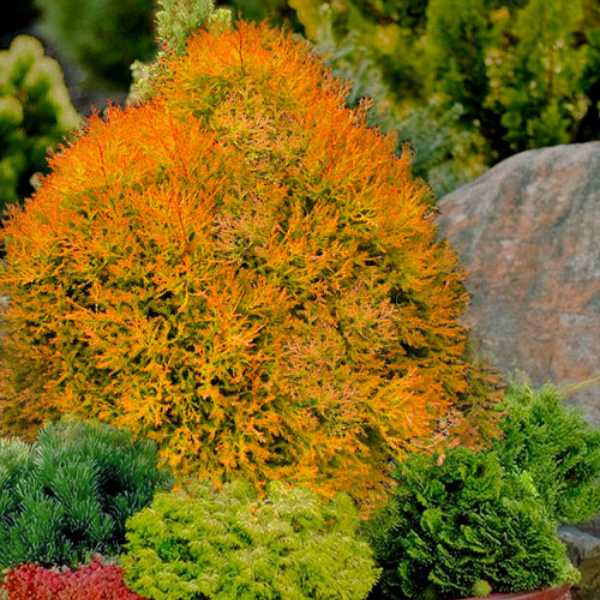
Despite being a great garden ornament, you can still grow it in a container to add a pop of color to your living area. You can keep the Fire Chief Arborvitae on a deck, patio, porch, or entryway. These beauties are a natural mutation of the Rhinegold, an Arborvitae cultivar. The tiny conifer shrub features a dense branching with beautiful feathery foliage. It has bright gold foliage which looks stunning and turns deep red in the fall in summer.
It grows slowly and makes a great display in rock gardens. A mature Fire Chief can measure two feet tall and wide. Its annual growth rate is three inches.
How to care for Fire Chief Arborvitae?
This plant is low maintenance and doesn’t grow very fast either. Luckily, it doesn’t need much attention.
Soil
This dwarf bush can grow and flourish in a wide variety of soil types if it has good drainage. In dry conditions, it can be unforgiving. It loves moist conditions and we recommend you do not leave it to dry out completely. You can apply mulch around the root zone during winter to protect it in colder climates.
Light
You need to understand that your Fire Chief Arborvitae needs ideal light for getting the bright golden spring foliage. It is not necessary to have facer plants when growing the Fire Chief Arborvitae. It does well in full sun as well as in partial shade. So, if you’re planning to grow the plant in a relatively sheltered location, it can tolerate hot summers to flourish in the afternoon shade.
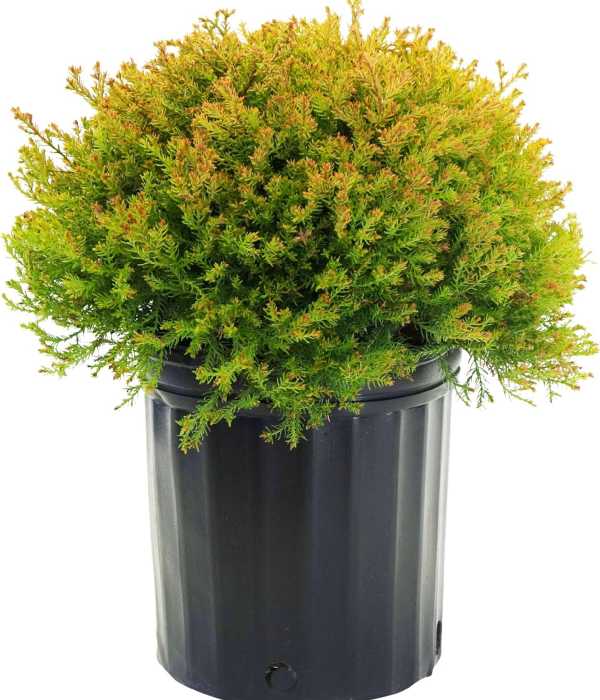
Its texture is relatively fine but know that it can lose some density if kept in shade for too long. Also, when young, keep it protected from drying winds. However, mature plants are capable of handling a bit more harsh light in exposed areas.
Since it thrives in full sunlight, it makes a great outdoor plant. It can also be a great indoor plant and many people keep them beside a huge window or an entrance.
Water
The best thing you can do for your beloved Fire Chief Arborvitae is to provide it with well-drained soils so that it keeps flourishing. If given regular to moderate watering, it can thrive best in full sun. One important thing to do is to check the soil type by putting your finger an inch deep. If it feels dry, water it accordingly and if it’s moist, avoid watering.
Temperature and Humidity
If you’re looking for southern living plants, Fire Chief Arborvitae is the one. You can easily plant them in growing zones 5-8. It is winter hardy in hardiness zone 3a. So, regular pruning is not necessary and you can only trim back the new growth of the current season. You can also get rid of some of the diebacks that have no use.
Fertilizer
Your Fire Chief Arborvitae loves getting fertilizers in early spring and again in summer. The best food for your plant is to raise the acid level. After that, you can use chemical fertilizer or organic matter. Laying some compost around the plant’s roots is beneficial.
If you’re using a chemical feed, use a slow-release fertilizer once a year in spring. You can also apply a fast-release 10-10-10 feed twice a year. Stop fertilizing when fall arrives as the Fire Chief goes into dormancy.
How to propagate Fire Chief Arborvitae Plants?
If you have a Thuja occidentalis congabe pp19009, propagating the plants is forbidden. But if you do not have any of these, you can use cuttings to propagate.
- Put some horticultural sand in a nursery pot and sprinkle some water by hand. The soil needs to be moist and even out the surface. Keep the pot standing in a shady area.
- Choose a nine-inch semi-hardwood cutting growth at the tip and mature bark at the base.
- Dip the cut end into some rooting hormone and dust off the excess powder.
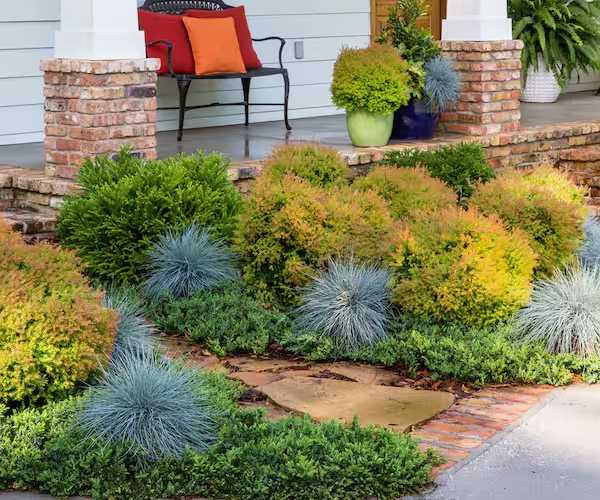
- Dig a hole in the sand almost half the length of the cutting. Insert the rooting end into the hole.
- Cover it with some sand around it to hold it upright.
- Keep the pot in a protected outdoor location that is far from direct sun or wind.
- Remember to spray the plant often by using a spray bottle or hand.
- The cutting roots in four weeks. You can transplant them into a gallon pot with potting soil. Keep it in partial shade until it is ready to be planted in the garden.
Varieties of Fire Chief Arborvitae
It is great to grow other Thuja varieties with your Fire Chief where urban pollution is intense. The Thuja plants that we recommend here can resist the sun and are ornamental.
Western Red Cedar – Thuja plicata
This tree is an important tree for indigenous people of the Pacific Northwest. While there is Cedar in its name, it is not a cedar. It can grow up to 175 feet tall. Its water requirements are moderate and it has dark green foliage.
Japanese Thuja – Thuja standishii
This is a timber tree that is found in Japan and is one of the five sacred trees of Kiso. This can grow up to 30 feet tall and 15 feet wide. It grows gray-green foliage.
American Arborvitae – Thuja occidentalis ‘smaragd’
This is an emerald green with vibrant foliage that lives all year round. It grows slowly and is a semi-dwarf tree.
Pests and Diseases
While the Fire Chief is normally disease and pest-free, you might want to keep some insects away from it. They are spider mites, leafminers, bagworms, and scales. As for diseases, this shrub can catch blight and root rot from overwatering.
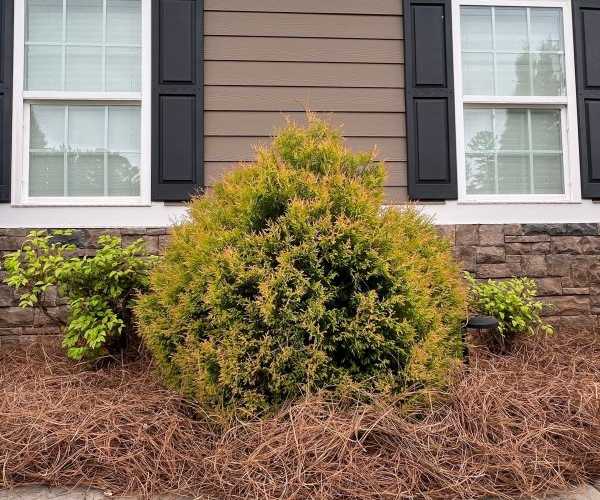
Benefits of fire chief arborvitae
There are many benefits of this plant:
- It provides food and cover for birds.
- First Nations people used eastern white cedar to prevent scurvy. They taught this practice to French settlers, giving rise to the name arborvitae, or “tree of life”. The Arbor-vitae sap contains vitamin C. (Kershaw)
- First Nations of the north used it for frames for their canoes. (Peattie)”
- It provides colorful foliage, making a great ornamental plant.
FAQs
Q: Why is my fire chief arborvitae turning brown?
A: Overwatering or underwatering can cause stress to chief arborvitae and can lead to browning of the foliage. Ensure that the plant is receiving the required amount of water based on its needs and the weather conditions.
Q: What can I plant next to the fire chief arborvitae?
A: You can keep plants like:
- Hardy Geraniums (Cranesbill) Hardy Geraniums (Cranesbill) ..
- Hydrangea macrophylla (Bigleaf Hydrangea) …
- Hydrangea paniculata (Panicle Hydrangea) …
- Hosta (Plantain Lily) …
- Azalea and Rhododendron. …
- Helleborus (Hellebore) …
Q: Why is it called arborvitae?
A: It was named arborvitae, Latin for “tree-of-life,” in 1558. The trees grow slowly and reach an age of 400 years or more. The oil from these trees still has medical purposes.
Q: How hardy are arborvitae?
A: These North American natives are hardy in zones 2-7. They often grow in places where little else might. Some varieties turn bronze in the fall and winter, so be selective when picking an arborvitae variety to plant in your yard.
Q: Are arborvitae low maintenance?
A: These are hardy trees that require very low maintenance. It does well in full sun or partial shade. You can plant them any time of the year except in very hot summer drought conditions. They prefer cooler climates and moist, alkaline soil, but can adapt to other soil types.
Also, Read Transform Your Bathroom With These 12 Plants
